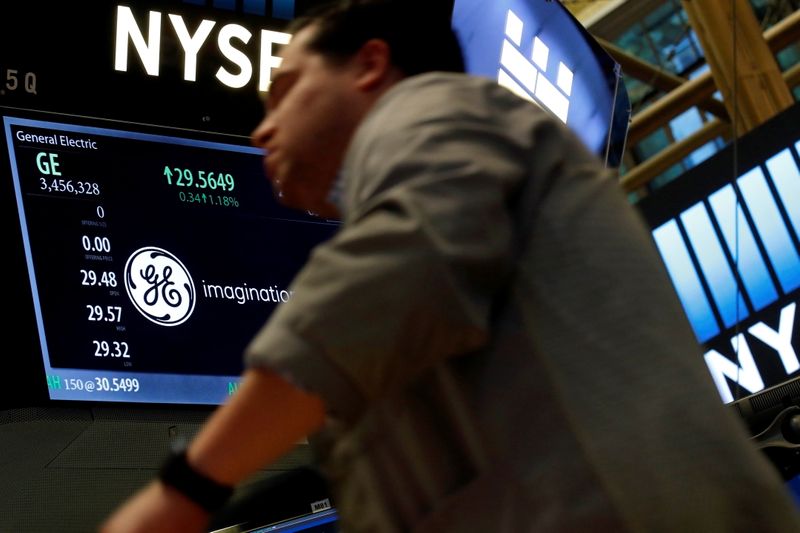Two National Guard members shot near White House
On Friday, the stock market witnessed significant gains, with the S&P 500 and Nasdaq Composite recording their best weekly performances since November, spurred by strong earnings from major tech companies.
The S&P 500 rose by 1.02% to close at 5,099.96, and the Nasdaq increased by 2.03% to end at 15,927.90, marking its best daily move since February. The Dow Jones Industrial Average (DJIA) also saw an increase, rising 153.86 points, or 0.4%, to 38,239.66.
This upward trend broke previous losing streaks, with the S&P 500 snapping a three-week slide by gaining 2.7% on the week and the Nasdaq reversing a four-week downtrend with a 4.2% rise.
Boosts in stock values were significantly influenced by impressive post-market earnings reports from Alphabet (NASDAQ:GOOGL) and Microsoft (NASDAQ:MSFT) on Thursday. Alphabet soared over 10%, experiencing its best day since July 2015 after announcing robust first-quarter earnings, its inaugural dividend, and a $70 billion buyback plan.
Meanwhile, Microsoft's shares increased nearly 2% following strong third-quarter fiscal results, driven by accelerated growth in its cloud segment.
This week, market focus will likely center on key economic events such as the Federal Reserve’s policy meeting on Wednesday, along with updates on average hourly earnings and the nonfarm payrolls report due Friday.
Investors will closely watch these developments to gauge further insights into inflation trends and their potential influence on the Fed’s monetary policy decisions.
“Recent inflation data has not given the Fed the confidence it desires to begin its easing cycle,” Bank of America economists said in a recent note.
“While the Fed can dismiss some of the recent firmness as noise, it will take on board some signal and conclude disinflation is proceeding at a slower pace. We think a June rate cut is off the table and have shifted the first cut to December,” they added.
Apple, Amazon to report this week
After Microsoft and Alphabet topped analyst expectations last week, and Tesla (NASDAQ:TSLA) missed the mark, it’s time for another batch of Big Tech earnings data.
This week, several more important earnings reports will be in the spotlight, most notably those by Apple Inc (NASDAQ:AAPL) and Amazon.com Inc (NASDAQ:AMZN).
“Roughly 1/3 of the 229 S&P 500 firms that have reported results so far have beaten consensus sales estimates but 2/3 of companies have beaten EPS estimates with an average surprise of 9%,” Goldman Sachs said in a note.
“S&P 500 EPS grew by 6% year/year in 2H 2023, and we forecast growth of 8% this year to $241.”
Other high-profile companies set to unveil their new earnings reports this week include Mastercard (NYSE:MA), Pfizer (NYSE:PFE), eBay (NASDAQ:EBAY), and Qualcomm (NASDAQ:QCOM), among others.
What analysts are saying about US stocks
Goldman Sachs: “We expect equities will struggle to find their footing if rates continue to rise sharply, regardless of the macro driver. Since 2006, the S&P 500 has fallen by an average of 4% when real yields rose by more than 2 standard deviations in a month. Today, a two standard deviation 1-month increase in the real 10-year yield equals roughly 55 bp. In line with the historical playbook, real 10-year yields have risen by 40 bp since mid-March and the S&P 500 has declined by 4%.”
Morgan Stanley: “Over the past year, the consensus view on the economic outcome has shifted numerous times which has led to elevated volatility in both front- end and back-end rates. This has near-term implications for equities given the strong relationship between the 6-month rate of change on equity multiples and the 10-year yield that we’ve shown in recent weeks. Looking forward through June, easier bond yield comparisons present a headwind to valuation even if rates stay at current levels. From there, rate headwinds should ease if yields don’t accelerate higher over the summer. We remain constructive on quality and recently published single stock screens focused on this theme for idea generation.”
BTIG: “Last week we felt a tactical bounce was likely, but ultimately more time was needed before a durable low. We got the bounce with SPX rallying ~3% off last week’s lows, but it now comes into a difficult level in the 5120-5130 range. We suspect it fails there and turns lower, but should it close above that bulls would have to be respected. Bigger picture, weekly MACD has flipped to a sell signal for the first time since Sep. '23. Semis (SMH) and Software (IGV) are into overhead resistance, while Oil Service (OIH) is coming off support and looks attractive here. Transports continue to show relative weakness, largely due to the truckers breaking down.”
RBC Capital Markets: “Through Wednesday, with nearly a third of results in, our stats show that 79% of S&P 500 companies were beating consensus on EPS while 58% were beating consensus on revenues for the 1Q24 reporting period. Early trends are similar for the Russell 2000 (66% beating on EPS vs. 52% beating on revenues). The gap between EPS and revenue beats has been in place for a few quarters. Large Cap stock price reactions to EPS beats remain weak.”
“We are seeing mostly underperformance among the stocks that have beaten consensus on EPS so far within the Russell 1000. It’s possible this trend could shift, and we note reactions to beats have been stronger in the Russell 2000.”
Jefferies: “The continued strength in the US economy has challenged the popular themes for 2024, including multiple rate cuts and narrow markets. Even before last week's correction, Mag 7 (ex-NVDA) was already performing in line with the broader S&P 500. Momentum stocks have been the biggest casualty on the recent unwind.. We tactically like value in the near term as the market broadens out, while still favouring strong earnings-backed ROIC stars.”
